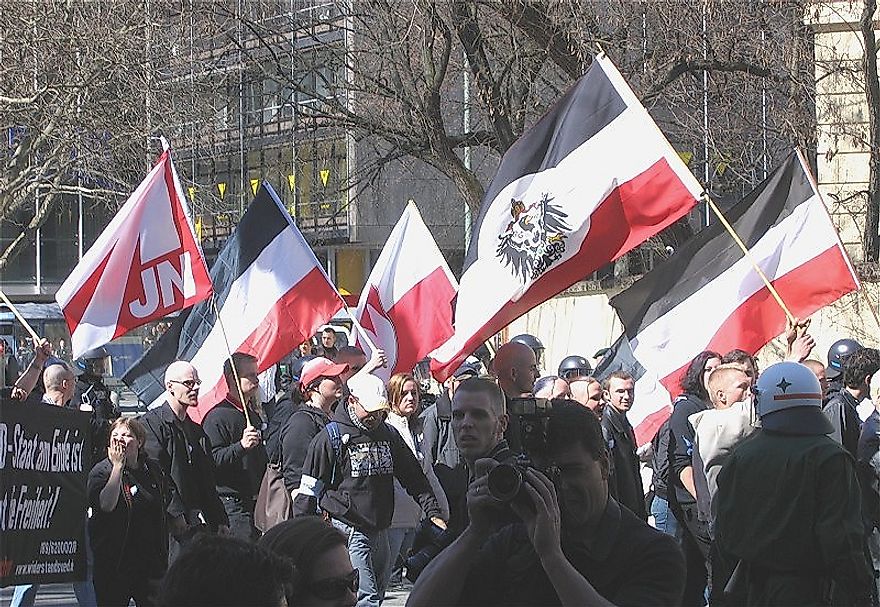The Neo-Nazi Movement

5. Defining Neo-Nazism
Neo-Nazism is resurgent Nazism that began with the post-World War II social and political movements based on the far-right-wing ideologies of Nazi Germany. Neo-Nazism is a virtually global phenomenon but concentrated in areas of Europe and the Americas.
4. History of the Movement
Some Neo-Nazi groups were inspired by Hitler’s Mein Kampf while others derive similar beliefs from older Catholic and nationalist traditions. Grieved by Germany’s defeat in World War II, some embraced the ambitions and structure of the Third Reich and glorified Nazi achievements. Other groups use Neo-Nazism to camouflage their agenda and ideology. Primary factors instrumental in the growth of Neo-Nazism were unstable economic, social and political conditions, which the leaders exploited, mainly among the youth. Neo-Nazis were the earliest users of the Internet with hundreds of websites distributing hate material, including the claim that America was controlled by the Zionist Occupation Government in Washington DC. Neo-Nazis have also historically attacked gay men and lesbians. Neo-Nazi fortunes have surged and abated in unpredictable ways and have differed geographically.
3. Notable Neo-Nazi Groups from Around the World
Some Neo-Nazi groups espouse simple hatred, but others are motivated by the creation of a fascist nation. Alfred Loritz or ‘blonde Hitler’ was the first to organize ex-Nazis into a political party called the Bavarian Economic Reconstruction Association. A spectacular attempt to revive Nazism was Fritz Dorls’ Socialist Reich Party whose deputy chairman was the Wehrmacht officer who had foiled the 1944 plot against Hitler. In 1965, Adolf Von Thadden founded the National Democratic Party of Germany and like Loritz and Dorls scared many people in Germany by winning seats in provincial and central governments. In Austria of the 1950s, Theodor Soucek’s Sozialorganische Bewegung Europas (SOBRE) was the only Neo-Nazi organization worth notice. Juan Peron of Argentina successfully exploited Neo-Nazi sentiments and recruited ex-Nazis to undertake prestigious military projects to expand Argentinean hegemony in the 1960s.
2. Beliefs and Criticism
Neo-Nazism seeks to establish a Fourth Reich with all the elements of ultra-nationalism, anti-Semitism, ableism (discrimination against disabled people) racism, homophobia, xenophobia and antiziganism (hatred of Gypsies). Holocaust denial is a common feature of Neo-Nazis who are also characterized by Nazi symbols and their adoration for Adolf Hitler. In its essence, Neo-Nazism is anti-intellectual. Consequently, it has no coherent ideology. In fact by the 70's, the distinctions blurred between populist right-wing movements, quasifascist political organizations and outright Fourth Reich supporters. There was chronic controversy over where specific parties were on the political spectrum. Hence, it became impossible to subject them to the laws of the individual countries.
1. Modern Significance and Opposition
Many countries have passed laws prohibiting the expression of pro-Nazi, homophobic or anti-Semitic views. Some European countries have also banned Nazi symbols. In 1993, after a series of race-related incidents, Italy passed the Mancino Law. It made incitement to violence a criminal offense, and hundreds of youth were incarcerated under the law. European Union ministers agreed in 2005 to extend the debate on suppressing xenophobia and considered outlawing Holocaust denial.







